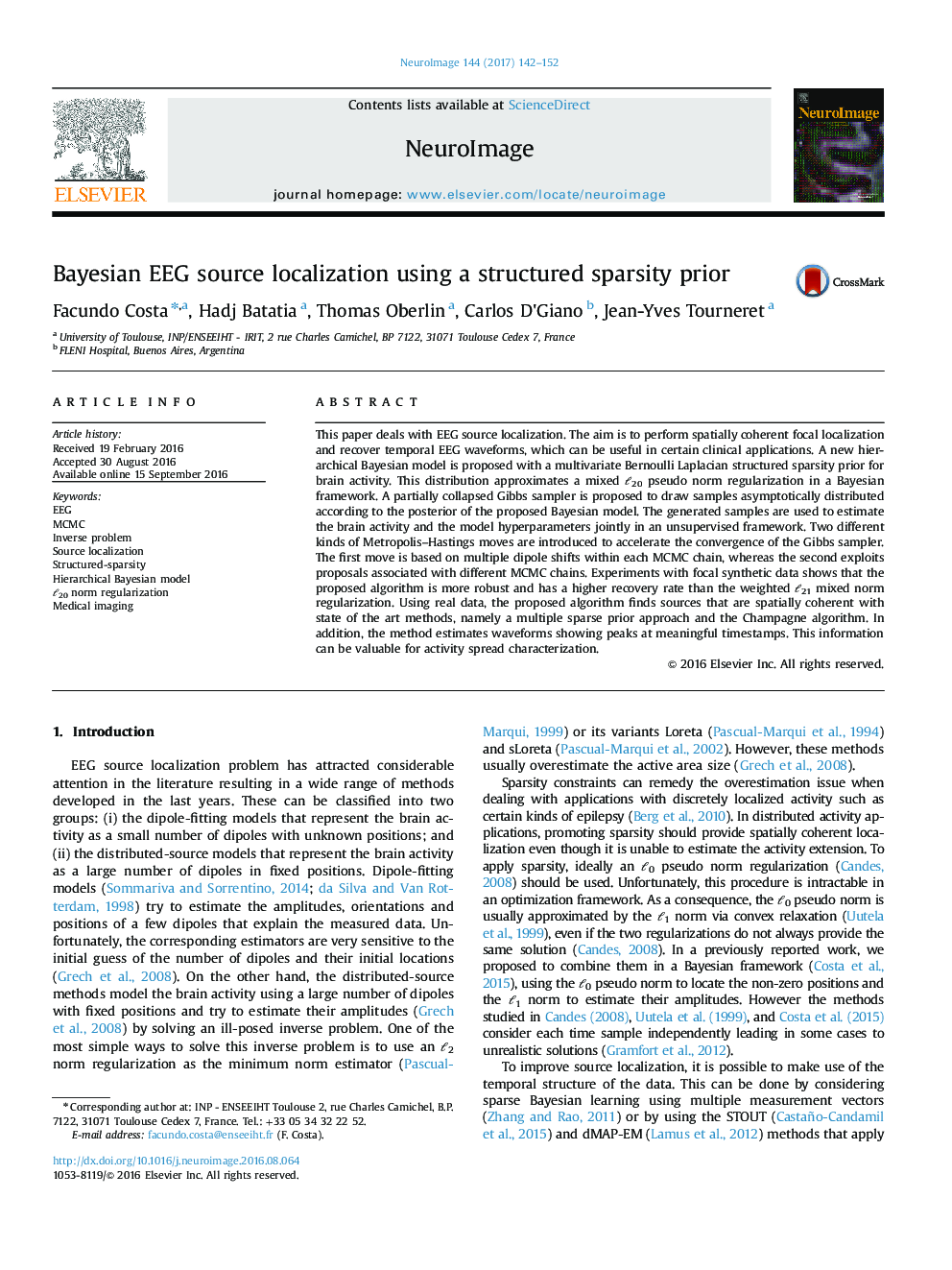| کد مقاله | کد نشریه | سال انتشار | مقاله انگلیسی | نسخه تمام متن |
|---|---|---|---|---|
| 5631668 | 1406503 | 2017 | 11 صفحه PDF | دانلود رایگان |

- A Bayesian model for solving the EEG source localization problem is proposed.
- The model promotes sparsity using a multivariate Bernoulli Laplacian prior.
- A Gibbs sampler is used to generate samples according to the posterior distribution.
- Metropolis-Hastings moves are used to improve the convergence rate of the sampler.
- The method is compared with synthetic and real data to state of the art algorithms.
This paper deals with EEG source localization. The aim is to perform spatially coherent focal localization and recover temporal EEG waveforms, which can be useful in certain clinical applications. A new hierarchical Bayesian model is proposed with a multivariate Bernoulli Laplacian structured sparsity prior for brain activity. This distribution approximates a mixed â20 pseudo norm regularization in a Bayesian framework. A partially collapsed Gibbs sampler is proposed to draw samples asymptotically distributed according to the posterior of the proposed Bayesian model. The generated samples are used to estimate the brain activity and the model hyperparameters jointly in an unsupervised framework. Two different kinds of Metropolis-Hastings moves are introduced to accelerate the convergence of the Gibbs sampler. The first move is based on multiple dipole shifts within each MCMC chain, whereas the second exploits proposals associated with different MCMC chains. Experiments with focal synthetic data shows that the proposed algorithm is more robust and has a higher recovery rate than the weighted â21 mixed norm regularization. Using real data, the proposed algorithm finds sources that are spatially coherent with state of the art methods, namely a multiple sparse prior approach and the Champagne algorithm. In addition, the method estimates waveforms showing peaks at meaningful timestamps. This information can be valuable for activity spread characterization.
Journal: NeuroImage - Volume 144, Part A, 1 January 2017, Pages 142-152